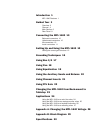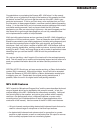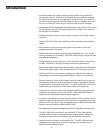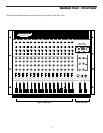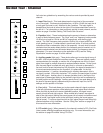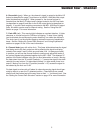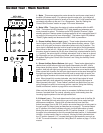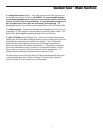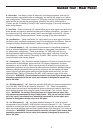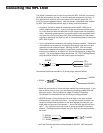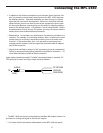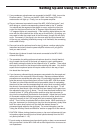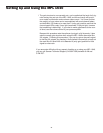
Introduction
Congratulations on purchasing the Samson MPL 1640 mixer! In this manual,
we’ll take you on a guided tour through all the features of this powerful and flexi-
ble device, and we’ll tell you how to get the most out of the MPL 1640 in your
particular environment. If this is your first mixer, we’re confident that you’ll find
the information in these pages valuable—read them carefully before proceeding
further. If, on the other hand, you’ve had some previous experience with mixers
and dislike reading manuals—well, we have to admit that the 1640 was
designed so you folks can start using it right away—but we still suggest you first
take some time to go through these pages so you can fully understand how
we’ve implemented a number of unique features.
We’ll start with system features and an overview of the MPL 1640, followed by a
guided tour of its front and rear panels. Then we’ll describe how the MPL 1640
should be connected to your existing equipment (including wiring diagrams) and
talk about the important topics of signal flow, gain structure, and grounding
techniques. Next, we’ll cover a number of specific MPL 1640 features (such as
busing, panning, equalization, auxiliary sends and returns, channel inserts, and
soloing) in detail. Finally, we’ll wrap things up with a series of applications notes
describing how you can use the MPL 1640 for both live performance and
recording.
Oh, and one last thing—don’t forget to fill out and mail in the enclosed warranty
card! This will enable you to receive online technical support and will allow us to
send you updated information about this and other Samson products in the
future.
SPECIAL NOTE: Should your unit ever require servicing, a Return Authorization
number (RA) is necessary. Without this number, the unit will not be accepted.
Please call Samson at (516) 932-1062 for a Return Authorization number prior
to shipping your unit. Please retain the original packing materials and, if
possible, return the unit in its original carton and packing materials.
MPL 1640 Features
“MPL” stands for “Microphone/Program/Line” and the name describes the broad
range of signals which can be handled by this powerful console. In fact, the
compact design of the MPL 1640 belies an extraordinary versatility. Add excel-
lent sound quality to the equation, and you’ve got a product which is equally
useful as a live performance mixer, a keyboard submixer, or even a main
recording mixer (you’ll find descriptions of each of these applications at the
conclusion of this manual). Here are some of the MPL 1640’s main features:
• 16 input channels, each providing electronically balanced inputs that can be
used for a broad range of microphone or line-level input sources.
• An electronically balanced main stereo output for connection to a power
amplifier or tape recorder, as well as a secondary Bus 3/4 output for connec-
tion to auxiliary equipment such as a monitoring system.
1




